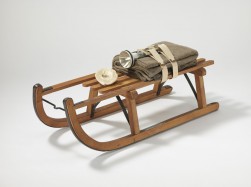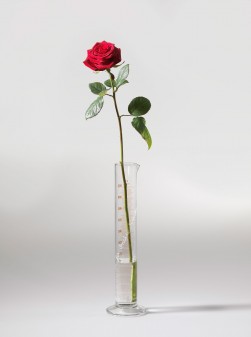Klaus Staeck, Edition Staeck, Heidelberg (1968–1972: Edition Tangente)
The publisher with whom Beuys worked most frequently was Klaus Staeck, who was involved in the production of more than 200 multiples. Staeck specialised in postcards, but also published works on paper in other formats, along with many object-based multiples.
Beuys and Staeck first collaborated in 1968, on a group of postcards to be sold at that year’s documenta 4 exhibition in Kassel.1 While this venture brought little in the way of sales or recognition, the two would go on to build a strong partnership. During the next fifteen years they would release more than a hundred postcards, including a series of five special cards created using substances like felt and PVC, with which Beuys often worked in his art. While Beuys conceived some of the postcard multiples himself, it was Staeck who proposed the majority. Together with the publisher Gerhard Steidl, he organised their printing and distribution.2 In the case of a smaller group of posters that Staeck produced with Beuys, it was Beuys who proposed each work, leaving Staeck and Steidl to develop a design and then print the finished image.3
The Economic Values multiples of the late 1970s comprised a large group of object-based multiples that were published by Edition Staeck. Consisting of supermarket products that were signed, stamped and annotated by Beuys, many of these works were suggested by Staeck, who often brought back items from East Germany that he thought would be suitable for the series.4 During one of his visits to the East, Staeck and his brother Rolf, bought a group of enamel basins, which became the basis for the multiple for Footwashing (1977).5



















